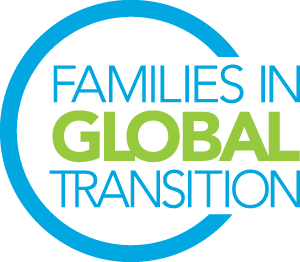Linda Janssen, a resilience, cross-cultural and transformative leadership coach, trainer, and longtime FIGT member, explains how the RAFT model—originally introduced by David C. Pollock and Ruth Van Reken in Third Culture Kids—can help us through changes of all kinds, including transitions induced by the current pandemic.
.png)
By Linda A. Janssen
[This content was originally shared by Linda during the online FIGT meetup on 14 March 2020. Her handout can be downloaded from the bottom of this page.]
One thing the globally mobile lifestyle requires from us all is to adjust to change. In Third Culture Kids: Growing up among Worlds, David C. Pollock and Ruth Van Reken introduced the concept of ‘building a RAFT’ to help ease us and our children through moves to new cultures.
RAFT stands for:
-
Reconciliation
-
Affirmation
-
Farewells
-
Think Destination
But RAFT is not only for moves across cultures. It is a change model for transitions of all kinds and can help us adjust in times of rapid change, ambiguity, even turmoil, such as what we are experiencing today.
(For full details on RAFT, please refer to Third Culture Kids, now in its third edition, by David C. Pollock, Ruth Van Reken, and Michael Pollock.)
R is for Reconciliation
Reconciliation means recognizing and acknowledging disruption, stress, tension, uncertainty, concern, turmoil, and loss associated with the evolving CoViD19 situation: within our families, our communities, our countries, worldwide.
We cannot make peace with difficulty, begin to address any negative impact on us or take steps to reduce stress if we don’t take the time to identify and put words to our thoughts and feelings.
The ‘Six Levels of Why’ exercise helps us each identify and acknowledge our own deepest concerns and challenges within our new circumstances, in order to begin the process of reconciliation.
Acceptance is not the same as liking something, nor is it giving up or giving in. It is understanding that naming what we truly fear or stress over most is the first step in loosening its hold over us.
When we are tense or experiencing negative feelings, we can ask ourselves this simple question: How am I feeling?
Without rushing, we wait for our answer, which can be written, spoken, or simply thought.
Then we ask Why? and answer ourselves beginning with Because… (and say what comes to mind).
It is in repeating Why? and answering with our reasons (Because…) multiple times that we gently drill down to the core of what is bothering us, thus setting the stage for reconciliation.
We tend to move from our conscious mind to our subconscious mind, helping to surface underlying concerns so that we may address them.
You can repeat this exercise as often as you wish, as circumstances change.
A is for Affirmation
Affirmation is appreciating and acknowledging who and what matters to us, and recognizing we can identify positives, even during challenging times.
The ‘Six Levels of Why’ exercise now helps us each identify and consider those little rays of light in our new circumstances. Sometimes they may feel difficult to identify, but they do exist.
We shift our question to Who/what am I thankful for? and then ask ourselves six rounds of Why? responding with Because... to mine the deeper meaning.
This helps us appreciate small positive aspects (and, yes, sometimes simply less negative aspects), so that we can acknowledge and affirm them. This is where we find the seeds of hope and gratitude.
F is for Farewells
To ‘enter’ well requires us to ‘leave’ well. Usually, we are thinking in terms of saying goodbye to the people, places, activities, and rituals that are important to us so that we avoid deep regrets for not having done so later.
Here, we may be saying goodbye to where we thought we’d be and what we thought we would be doing; we also add what opportunities or choices we no longer have, people we cannot be with, etc. While some of these might simply be postponed, others are avenues clearly closed off to us.
This is where we focus on what we’re leaving behind: the way we had hoped things would be, the positives we’d been looking forward to, and as much of the negative feelings we’re experiencing as we are able to.

The metaphor of releasing a balloon (or a handful of balloons) represents letting go of our losses and what ‘might have been.’ As in saying goodbyes to people and places, this stage can be bittersweet, but is necessary to move on in as healthy a way as possible.
T is for Think Destination
Only after reconciling, affirming, and saying farewell are we ready to turn our attention more fully to what comes next. It is important that we try not to impose undue expectations on what lies ahead, and instead remain open to what is to come.
During challenging times, it helps to think of what one or two small ‘next steps’ you could take to help move you along to a better place. This could mean redoubling self-care efforts, reaching out to check on or check in with someone else, giving yourself permission to do something that gives you joy (or simply makes you feel better), or even allowing yourself to take a well-needed break.
Resources
Thank you to Cath Brew of Drawn to a Story for the balloon illustration!
————————-
As a Resilience, Cross-Cultural and Transformative Leadership coach, trainer and speaker, longtime FIGT member Linda A. Janssen helps people deal with complexity, challenge, and change. She is the author of The Emotionally Resilient Expat: Engage, Adapt and Thrive Across Cultures.

